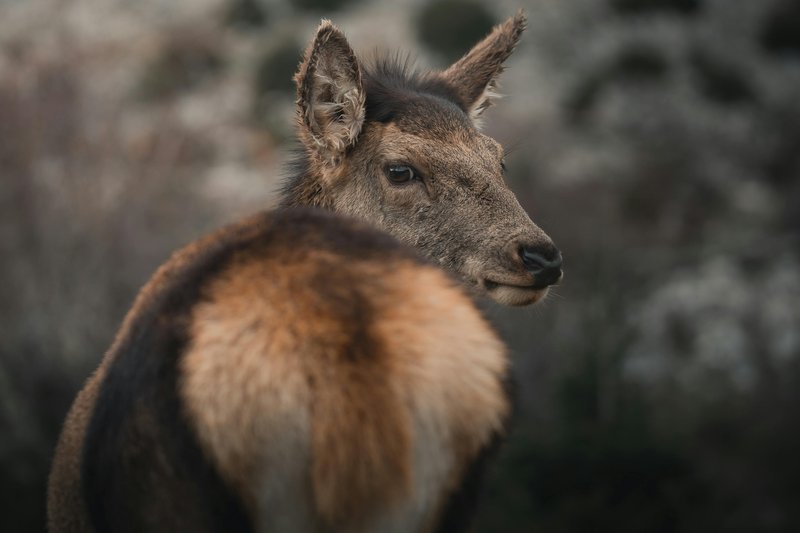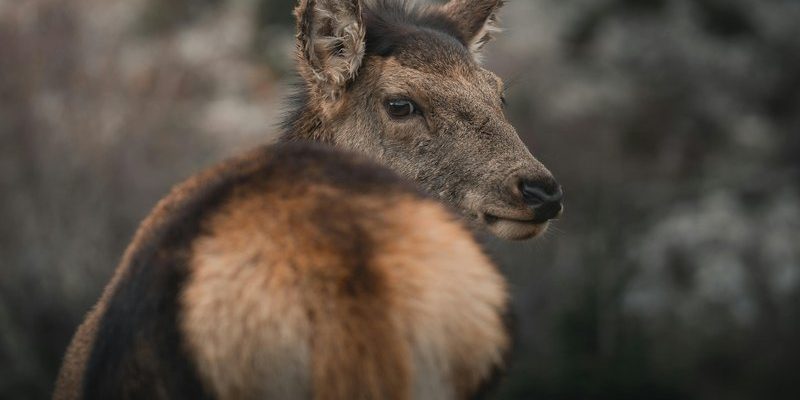
Musk deer belong to the family Moschidae, and they primarily roam the mountainous regions of Asia. What sets them apart is their distinct musk glands, which are used to produce a strong-smelling substance. This musk is highly sought after in perfumery and traditional medicine, making musk deer a subject of interest for conservation and ecological study. Let’s dive into their evolutionary journey and uncover the secrets behind their unique biology.
Origins of the Musk Deer
The story of musk deer begins millions of years ago, during a time when the continents were arranged quite differently. These small animals evolved from primitive even-toed ungulates, a group that includes other hoofed mammals. The earliest remnants of musk deer trace back to the Miocene epoch, around 20 million years ago. Back then, the climate across Europe and Asia was much warmer and more humid, providing a suitable habitat for these ancestors.
Here’s the thing: as the climate shifted, so did the distribution of land and resources. Musk deer and their relatives adapted to the cooler, mountainous regions of Central and East Asia. Over time, their bodies morphed to fit this environment—becoming smaller and stockier, which helped them navigate rugged terrains. This adaptability is a beautiful example of how living creatures evolve in response to changing ecosystems.
Among the various species, the Siberian musk deer is notably ancient and retains many primitive traits. This remarkable ability to survive harsh environments while evolving distinct features highlights the resilience of musk deer throughout history.
Physical Characteristics
Musk deer aren’t your typical deer. They stand out due to their unique appearance. One of their most notable features is their lack of antlers—instead, males possess tusks that extend from their upper jaws. These tusks provide both a means of defense and a tool for competing with rivals during mating season.
They’re also relatively small, averaging about 2 to 3 feet in height. Their thick fur helps keep them warm in snowy climates, while their large, expressive eyes give them a somewhat *quirky* look. Honestly, have you ever seen a deer that looks more like it’s wearing a perpetual surprised expression?
Musk deer have short legs and a compact body, which makes them adept at agile movements across rocky terrain. Furthermore, their special gland located near the genitals secretes musk, a pungent substance used in attracting mates and marking territory. This gland is such an integral part of their identity that it defines their very name.
Habitat and Distribution
Musk deer primarily inhabit *forested regions and mountainous areas* across Asia, from the Himalayas to the forests of Siberia. Their preference for these secluded habitats is no accident. The dense vegetation offers protection from predators while providing a rich source of food, including leaves, shoots, and fruits.
You might be wondering why they thrive in such specific environments. The answer lies in their adaptations. Musk deer have evolved to navigate steep slopes and rocky outcrops, which keeps them safe from larger carnivorous animals. This choice of habitat also plays a crucial role in their survival, as it minimizes human interaction and hunting pressures.
In recent years, however, their habitats have been threatened by deforestation and urban expansion. Protecting these unique environments is essential for the continued survival of musk deer populations across the continent.
Behavior and Social Structure
Musk deer are generally solitary animals, unlike many of their deer relatives who prefer to form herds. Males establish territories during mating seasons and engage in vocalizations and scent-marking to ward off competitors. During these periods, their behavior becomes more pronounced, as they put on displays to attract females.
Interestingly, female musk deer usually give birth to just one fawn at a time, which remains hidden for the first few weeks of its life. This low reproductive rate can make it challenging for populations to recover from threats. The nurturing behavior of mothers is quite fascinating; they often return to their fawns after foraging for food, ensuring their young are safe and well-fed.
Another intriguing aspect of musk deer behavior is their *ability to climb*. They’re surprisingly adept at navigating steep terrains, which not only keeps them safe from predators but also allows them to find the best food sources.
Conservation Status and Threats
Sadly, musk deer populations are declining across their range, largely due to poaching and habitat loss. Their musk glands are highly valued in the fragrance industry, leading to illegal hunting practices. In some regions, they’re also threatened by habitat destruction caused by logging, agriculture, and urban development.
Many species of musk deer are classified as vulnerable or endangered by the International Union for Conservation of Nature (IUCN). Conservation efforts are underway to protect their habitats and curb poaching, including establishing protected areas and promoting sustainable practices in local communities.
Here’s the thing: if we don’t act now, we risk losing these remarkable creatures forever. Supporting conservation initiatives not only protects musk deer but also helps maintain the ecological balance in the regions they inhabit.
Understanding the evolutionary history of the musk deer gives us insight into the delicate interplay of nature and the need for conservation. These creatures are not just fascinating due to their peculiar traits; they also play a vital role in their ecosystems. By feeding on plant matter, they help control vegetation growth, which in turn supports other wildlife.
In a world where many species are threatened, it’s crucial to recognize the value of each organism. The musk deer’s journey from ancient ancestors to their current state teaches us about adaptability, resilience, and the ongoing challenges of wildlife conservation.
So, next time you hear about musk deer, remember their unique story and the importance of preserving their habitats. After all, every small step we take towards conservation can lead to significant changes for the future of our planet’s ecosystems.

